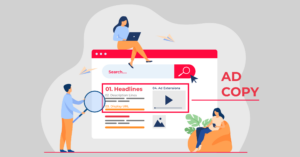Data is the new money in today’s dynamic digital world. Effective data exploitation and utilisation can make or break a business’ marketing initiatives. At Naked Marketing, we are aware of the revolutionary potential of data-driven marketing and how it affects businesses’ success in the modern era.
Data-driven marketing represents a fundamental change in how businesses interact with their customers, it’s not just a fad. It gives businesses the ability to precisely measure the results of their efforts, customise their marketing campaigns to suit the interests of specific customers and make well-informed judgements. This blog will examine the effectiveness of data-driven marketing and offer successful tactics that can improve the internet visibility of your business.
Comprehending Marketing Driven by Data
In order to guide marketing decisions, data must be gathered, analysed, and interpreted. This is known as data-driven marketing. It is dependent on information from a number of sources, such as market research, customer databases, social media insights, and website analytics. Gaining knowledge about consumer behaviour, tastes, and trends can help firms develop highly specialised and customised marketing efforts.
The Significance of Data-Driven Marketing
Personalisation is essential in a world where consumers are constantly exposed to marketing messages. With data-driven marketing, businesses can:
- Improve Targeting: Businesses may pinpoint their ideal clients and present them with offers and material that speak to them by evaluating consumer data.
- Boost Engagement: Personalised marketing communications connect with consumers more deeply and are more engaging.
- Maximise ROI: Data-driven insights help businesses spend their marketing dollars more wisely, getting the most out of their investment.
Important Data Sources for Marketing Based on Data
You need access to multiple data sources in order to successfully utilise data-driven marketing:
- Website analytics: Resources such as Google Analytics offer useful information about user activity, traffic to websites, and conversion rates.
- Customer databases: Information about interactions and preferences with customers is stored by Customer Relationship Management (CRM) systems.
- Social Media Insights: Social media platforms provide information on demographics, content performance, and audience engagement.
- Market research: Information about rivals, market dynamics, and industry trends can be obtained from external data sources.
Techniques for Successful Data-Driven Marketing
Applying data-driven marketing calls for a methodical strategy:
- Data collection: Compile information from many sources, making sure it is accurate and comprehensive.
- Data Analysis: To process and examine the gathered data, use data analytics tools. Determine patterns, trends, and opportunities for development.
- Segmentation: To enable tailored communications, divide your audience into groups according to shared traits.
- Customisation: Craft offers and content that are specific to each group.
- A/B testing: Iteratively test several marketing strategies to find the ones that connect with your target audience the most.
Obstacles and Typical Mistakes
Even while data-driven marketing has many advantages, there are drawbacks as well:
- Data Privacy: Businesses need to make sure that laws like the CCPA and GDPR are followed because data privacy is becoming a bigger concern.
- Resource Restrictions: Smaller businesses could find it difficult to invest in the knowledge and instruments of data analytics. One option may be to partner with professionals or outsource the work.
- Data Quality: Outdated or inaccurate data can produce erroneous conclusions. Maintain and sanitise your data sources on a regular basis.
Calculating ROI and Efficiency
In order to assess the effectiveness of your data-driven marketing initiatives, you must establish and closely monitor key performance indicators (KPIs). Here are a few typical KPIs:
- Conversion Rate: The proportion of website visitors that complete a desired action, like buying something.
- Client Lifetime Value (CLV) is the total amount of money a client brings in over the course of doing business with you.
- The ratio of the profit made through marketing efforts to the campaigns’ expenses is known as return on investment, or ROI.
- Customer Acquisition Cost (CAC): The price paid to bring on a new client.
Success requires embracing data-driven marketing.
Data-driven marketing is a continuous process of gathering, evaluating, and incorporating insights into your advertising campaigns. It is not a one-time event. Adopting data-driven tactics will help you develop more tailored and successful campaigns that connect with your target demographic and spur expansion. Here at Naked Marketing, we think data-driven marketing has the ability to change things. To ensure that you get the most out of your marketing initiatives, our team of professionals can assist you in navigating the complexity of data analytics. You can fully realise your brand’s potential in the digital space if you have the appropriate data and strategy in place. Begin your journey towards data-driven marketing right now!




